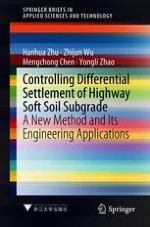Drawing on years of practical on-site experience, this book presents a new method for controlling "bridge-head bumping" in soft soil ground. Based on deformation compatibility and control theory of structure, it proposes strategies for improving the design method of soft soil ground and the effective "bridge-head bumping" control method. Soft soil ground is chiefly characterized by a large void ratio, high compressibility, high water content, low impermeability, low strength, strong structure and high sensitivity. As a result, it has pronounced rheological properties, and controlling "bridge-head bumping" in soft soil ground is essential to control the amount of soil rheology-induced unstable successive settlement. The book offers extensive information on this and related topics, making it a valuable guide for engineers in Civil Engineering and Geotechnical Engineering alike.
